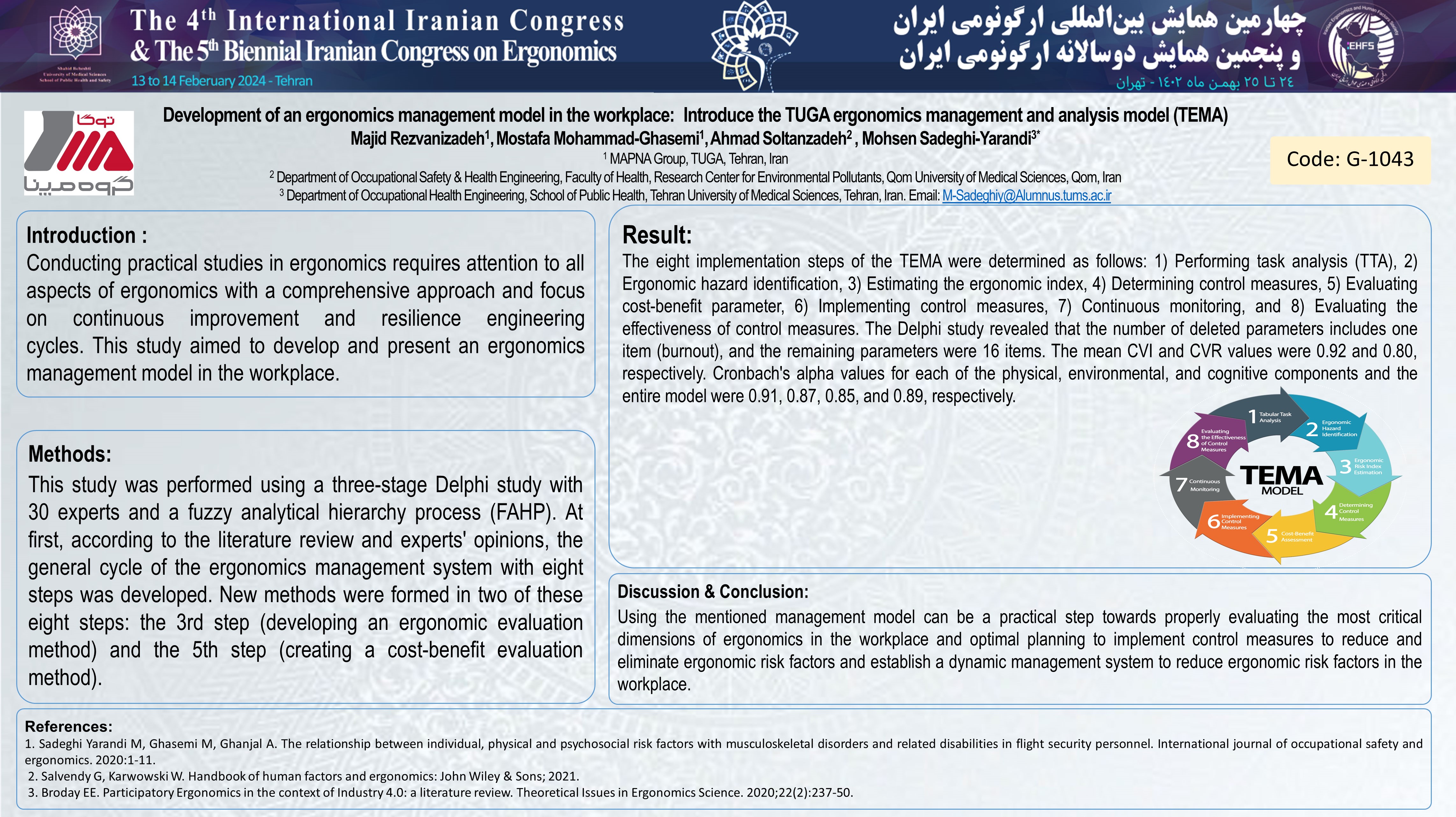Development of an ergonomics management model in the workplace: Introduce the TUGA ergonomics management and analysis model (TEMA)
Code: G-1043
Authors: Majid Rezvanizadeh, Mostafa Mohammad-Ghasemi, Ahmad Soltanzadeh, Mohsen Sadeghi-Yarandi © ℗
Schedule: Not Scheduled!
Download: Download Poster
Abstract:
Introduction
BACKGROUND: Conducting practical studies in ergonomics requires attention to all aspects of ergonomics with a comprehensive approach and focus on continuous improvement and resilience engineering cycles. This study aimed to develop and present an ergonomics management model in the workplace.
Methods and Materials / Case Report
This study was performed using a three-stage Delphi study with 30 experts and a fuzzy analytical hierarchy process (FAHP). At first, according to the literature review and experts' opinions, the general cycle of the ergonomics management system with eight steps was developed. New methods were formed in two of these eight steps: the 3rd step (developing an ergonomic evaluation method) and the 5th step (creating a cost-benefit evaluation method).
Results
The eight implementation steps of the TEMA were determined as follows: 1) Performing task analysis (TTA), 2) Ergonomic hazard identification, 3) Estimating the ergonomic index, 4) Determining control measures, 5) Evaluating cost-benefit parameter, 6) Implementing control measures, 7) Continuous monitoring, and 8) Evaluating the effectiveness of control measures. The Delphi study revealed that the number of deleted parameters includes one item (burnout), and the remaining parameters were 16 items. The mean CVI and CVR values were 0.92 and 0.80, respectively. Cronbach's alpha values for each of the physical, environmental, and cognitive components and the entire model were 0.91, 0.87, 0.85, and 0.89, respectively.
Conclusion
Using the mentioned management model can be a practical step towards properly evaluating the most critical dimensions of ergonomics in the workplace and optimal planning to implement control measures to reduce and eliminate ergonomic risk factors and establish a dynamic management system to reduce ergonomic risk factors in the workplace.
Key Words
Ergonomics management, TEMA model, ergonomic risk index, FAHP.
Comments (0)
Post a comment
Post comment is closed by admin.
